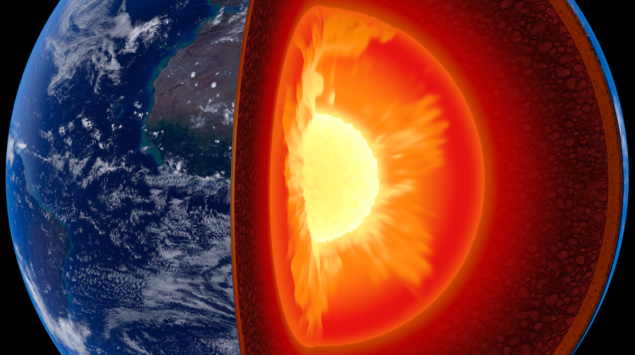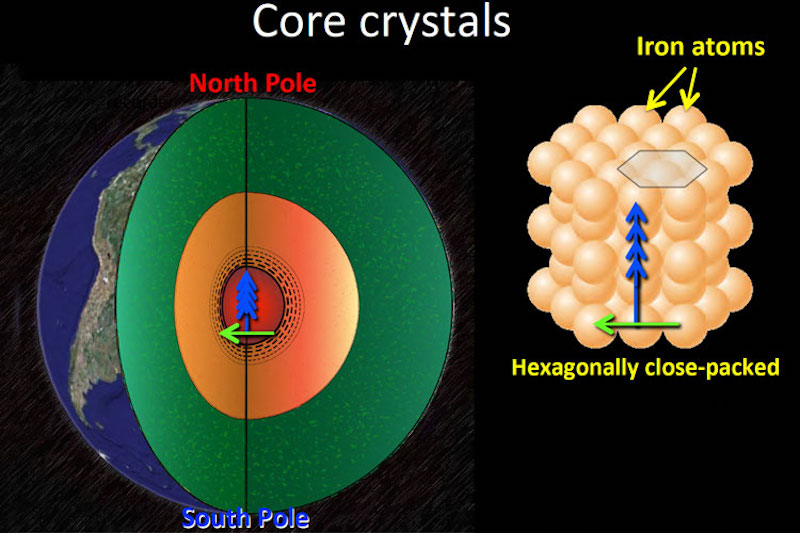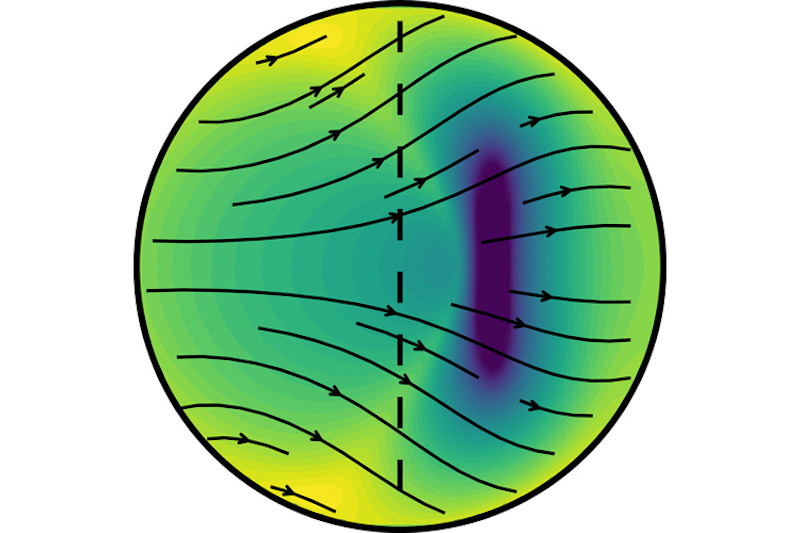
Earth’s lopsided core growth
Far beneath our feet, Earth’s inner core is solid iron, very hot and very dense. It’s surrounded by a molten iron-nickel outer core (whose flow generates Earth’s magnetic field) and a rocky mantle that’s mostly solid but which, over eons of time, moves slowly. Illustrations show Earth’s inner core as round, like a ball. But Earth’s core doesn’t tend toward roundness. A new study suggests that Earth’s inner core grows asymmetrically, that is, faster on one side than the other. That’s apparently been the case since our planet’s core began to freeze out from molten iron more than half a billion years ago. The region of the inner core with the fastest growth is located beneath Indonesia’s Banda Sea.
If the inner core is growing faster on one side, does that mean the core is now lopsided? No. The relentless pull of Earth’s gravity squeezes what would otherwise be a lopsided Earth core back into the shape of a round ball.
The researchers announced their findings on June 3, 2021 via the University of California, Berkeley. Nature Geoscience published the peer-reviewed results on June 3. The scientists’ statement said the new work:
… has implications for Earth’s magnetic field and its history, because convection in the outer core driven by release of heat from the inner core is what today drives the dynamo that generates the magnetic field that protects us from dangerous particles from the sun.
Again, Earth’s core doesn’t end up lopsided. Gravity pulls it back into the shape of a sphere.
Still, something is causing one side of the inner core to grow at a faster rate. What could it be? Whatever it is, it’s removing heat from that side of the core – cooling it – more quickly than the opposite side, the side located under Brazil.
The evolution of Earth’s inner core
To understand why one side of Earth’s inner core would cool or solidify – grow – faster than the other side, the researchers looked at the history of the Earth’s core and its related magnetic field.
The heat of Earth’s inner core comes from radioactive decay, plus heat leftover from Earth’s formation 4.5 billion years ago. Since Earth formed, the planet overall has been slowly cooling. As it does, Earth’s inner core grows slowly. It grows by solidifying or crystallizing bits of the molten outer core, at a rate of about 1 millimeter per year.
The release of heat from the inner core helps generate our planet’s magnetic field. Barbara Romanowicz at UC Berkeley, one of the authors of the new paper, commented:
We provide rather loose bounds on the age of the inner core – between half a billion and 1.5 billion years – that can be of help in the debate about how the magnetic field was generated prior to the existence of the solid inner core. We know the magnetic field already existed 3 billion years ago, so other processes must have driven convection in the outer core at that time.
According to lead author Daniel Frost at Berkeley Seismological Laboratory (BSL):
Debate about the age of the inner core has been going on for a long time. The complication is: If the inner core has been able to exist only for 1.5 billion years, based on what we know about how it loses heat and how hot it is, then where did the older magnetic field come from? That is where this idea of dissolved light elements that then freeze out came from.

Pondering a 3-decade old mystery
Scientists have pondered the following question: Why is the crystallized iron in the core aligned along the rotation axis of the Earth? The iron crystals should be randomly aligned, but instead they follow the Earth’s axis, more so in the west than the east.
Scientists noticed this by measuring how long it takes seismic waves from earthquakes to travel through the inner core. Because of the west-east asymmetry, the waves travel faster in a north-south direction and slower east-west, along the equator.
The researchers’ new model agrees with the researchers’ observations about these seismic wave travel times. The difference in travel times also increases with depth and is offset from Earth’s rotation axis by about 250 miles (400 km).

A computer model of iron crystal growth
Frost and Romanowicz, along with Marine Lasbleis of the Université de Nantes in France and Brian Chandler of UC Berkeley, created a new computer model. This model combined other geodynamic growth models and the mineral physics of iron at high pressure and high temperature. Frost said:
The simplest model seemed a bit unusual, that the inner core is asymmetric. The west side looks different from the east side all the way to the center, not just at the top of the inner core, as some have suggested. The only way we can explain that is by one side growing faster than the other.
In this model, the asymmetric growth is about 60% higher in the east.
The results also suggest that the inner core is composed of about 4-8% nickel, and the rest iron. Interestingly, this is similar to the proportions found in iron meteorites. Scientists think those meteorites were once part of the cores of dwarf planets.


Bottom line: Earth’s inner core is asymmetric, growing faster on one side than the other. A new computer model from researchers at UC Berkeley shows how faster cooling on one side of the core helps explain why.
Source: Dynamic history of the inner core constrained by seismic anisotropy











